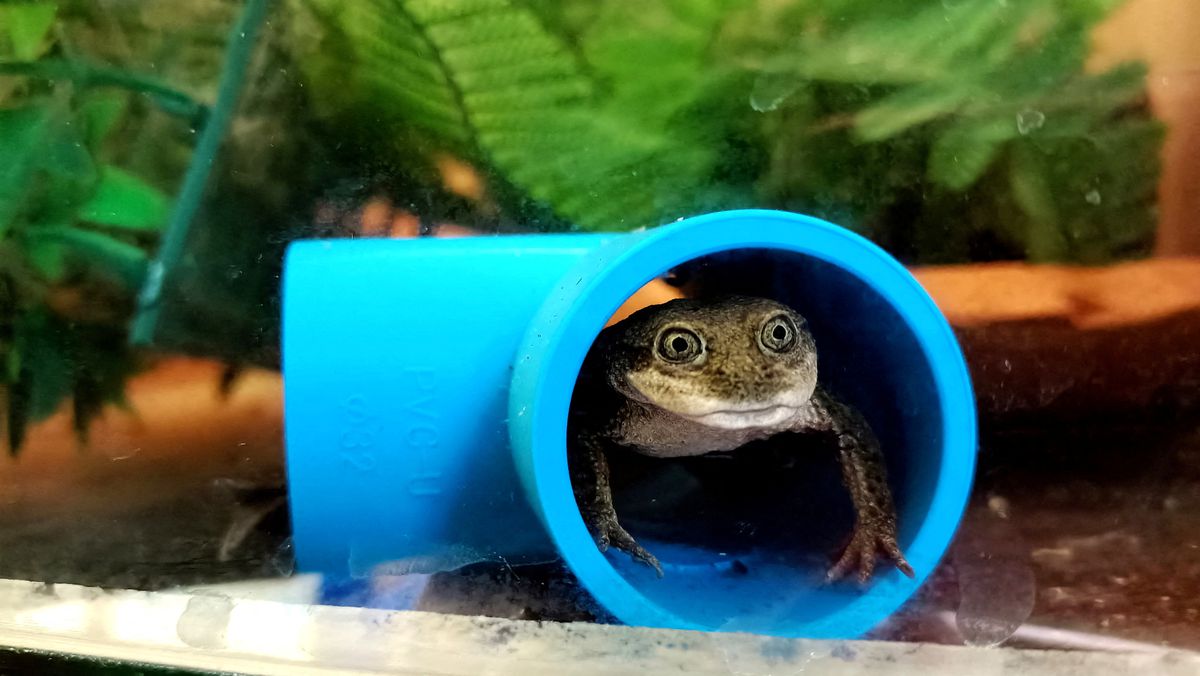
An endangered frog known as “Rana del Loa” is seen inside a quarantine enclosure at the National Zoo in Santiago in this undated photo obtained on Oct. 15.
17:44 JST, November 6, 2024
SANTIAGO (Reuters) — Sandwiched between wet towels in temperature-monitored containers, a dozen critically endangered Loa water frogs were flown from Santiago to Calama last month, the first step conservationists have taken to return the amphibians to their natural habitat in a river that runs through the world’s driest desert.
The frogs were on the verge of extinction in 2019 after water extraction from mining, agriculture and development, exacerbated by climate change, decimated their habitat.
Scientists were able to rescue the remaining malnourished and sickly frogs, relocating 60 and transporting 14 to the Parquemet Zoo in Santiago for reproduction.
Once there, Osvaldo Cabeza, a herpetologist, led a successful reproduction campaign, reaching a peak of 500 individuals. Now, he wants to help bring them back to their environment.
“If we do not recover this habitat, it is very likely that the frogs will become extinct in the wild and will only exist in laboratories,” Cabeza said, adding that different sectors need to come together to restore the habitat.
“It’s important to make joint efforts to recover [the frog’s] environment.”
To do that, state-run copper giant Codelco and the local government created and recently inaugurated El Loa Biodiversity and Conservation Center (CENByC) in northern Calama.
“The frog is a survivor. It has proven to be quite resilient to all the adverse conditions it has been exposed to,” said Francisca Oliva, the center’s coordinator. “So my way of looking at this project in the future is quite hopeful.”
At the new center, scientists hope to support the frogs and encourage reproduction. In the future, they want to bring them back to their natural habitat. For now, the government established a new protected zone in Calama and aims to work with companies and citizens to clean and protect the damaged habitat.
"Science & Nature" POPULAR ARTICLE
-

Genome Study Reveals Milestone in History of Cat Domestication
-

Big Leap in Quest to Get to Bottom of Climate Ice Mystery
-

Japan Set to Participate in EU’s R&D Framework, Aims to Boost Cooperation in Tech, Energy
-

Paws on Parade: Nairobi’s Dogs Dazzle at ‘Pawchella’
-

Japan’s H3 Rocket Failed in Latest Launch, Says Official
JN ACCESS RANKING
-

Tokyo Economic Security Forum to Hold Inaugural Meeting Amid Tense Global Environment
-

Keidanren Chairman Yoshinobu Tsutsui Visits Kashiwazaki-Kariwa Nuclear Power Plant; Inspects New Emergency Safety System
-

Imports of Rare Earths from China Facing Delays, May Be Caused by Deterioration of Japan-China Relations
-

University of Tokyo Professor Discusses Japanese Economic Security in Interview Ahead of Forum
-

Japan Pulls out of Vietnam Nuclear Project, Complicating Hanoi’s Power Plans






















